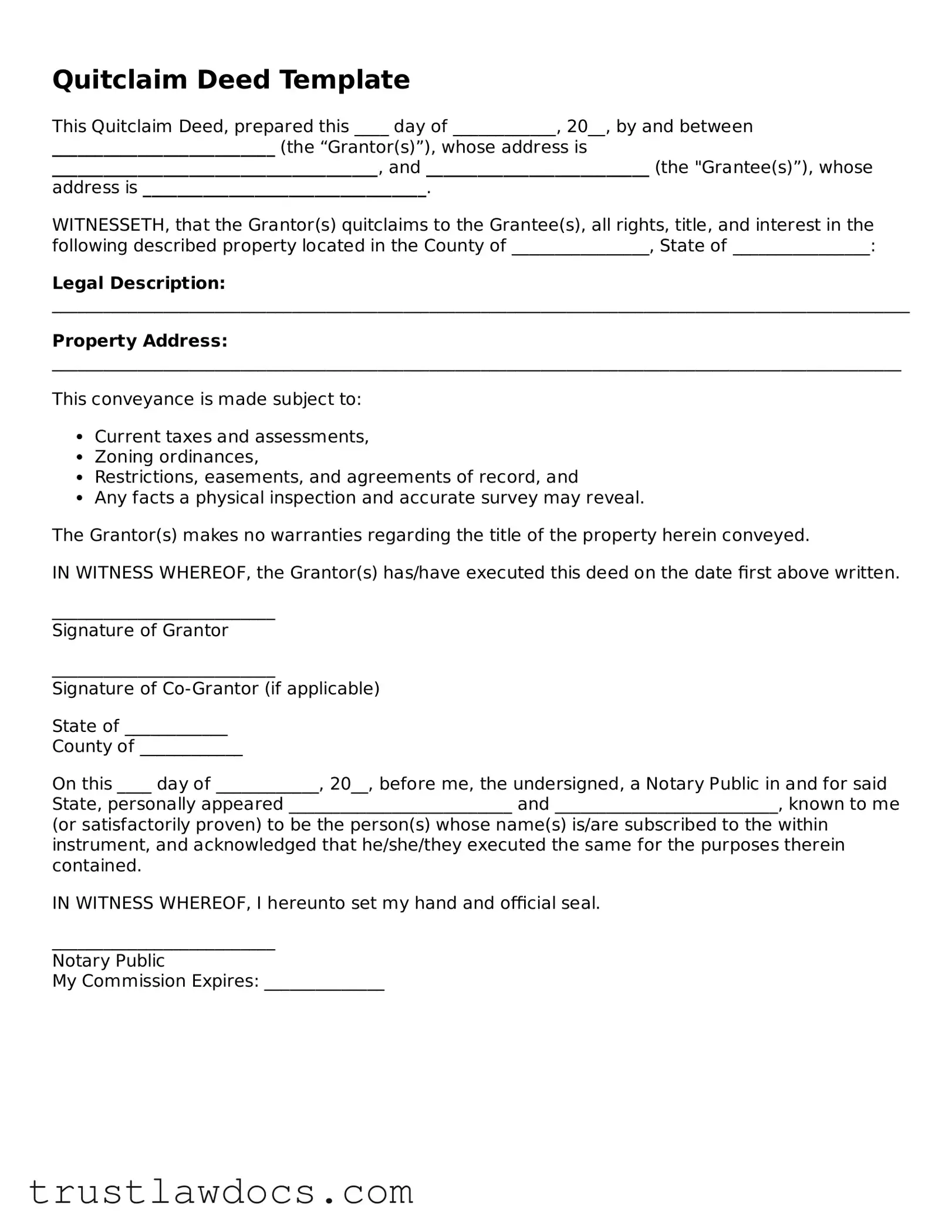Quitclaim Deed Template
This Quitclaim Deed, prepared this ____ day of ____________, 20__, by and between __________________________ (the “Grantor(s)”), whose address is ______________________________________, and __________________________ (the "Grantee(s)”), whose address is _________________________________.
WITNESSETH, that the Grantor(s) quitclaims to the Grantee(s), all rights, title, and interest in the following described property located in the County of ________________, State of ________________:
Legal Description: ____________________________________________________________________________________________________
Property Address: ___________________________________________________________________________________________________
This conveyance is made subject to:
- Current taxes and assessments,
- Zoning ordinances,
- Restrictions, easements, and agreements of record, and
- Any facts a physical inspection and accurate survey may reveal.
The Grantor(s) makes no warranties regarding the title of the property herein conveyed.
IN WITNESS WHEREOF, the Grantor(s) has/have executed this deed on the date first above written.
__________________________
Signature of Grantor
__________________________
Signature of Co-Grantor (if applicable)
State of ____________
County of ____________
On this ____ day of ____________, 20__, before me, the undersigned, a Notary Public in and for said State, personally appeared __________________________ and __________________________, known to me (or satisfactorily proven) to be the person(s) whose name(s) is/are subscribed to the within instrument, and acknowledged that he/she/they executed the same for the purposes therein contained.
IN WITNESS WHEREOF, I hereunto set my hand and official seal.
__________________________
Notary Public
My Commission Expires: ______________
